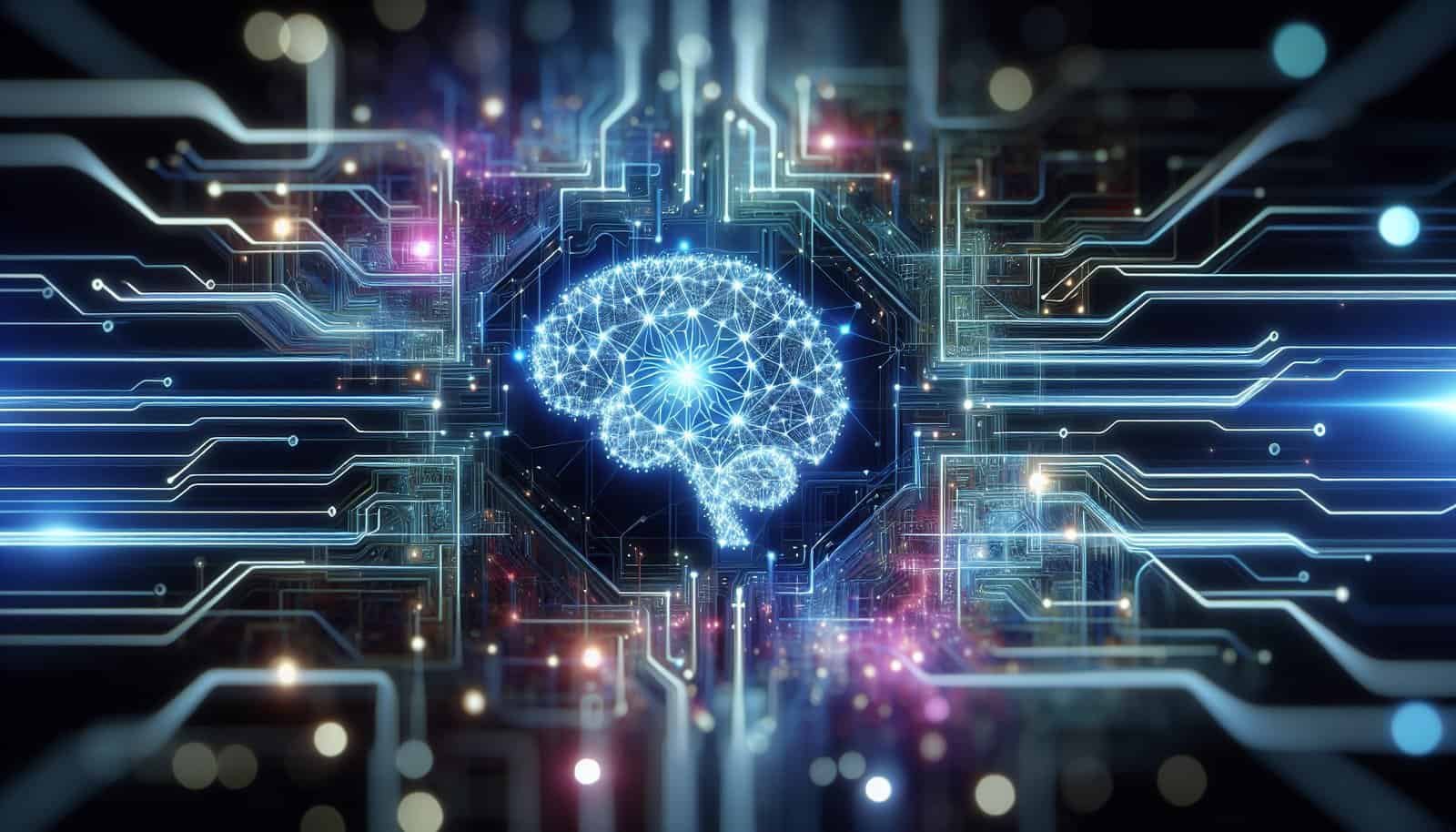Have you ever wondered how artificial intelligence (AI) is revolutionizing the world of cryptocurrency? As these two groundbreaking technologies converge, they open up a plethora of opportunities and benefits, reshaping the landscape of digital finance. In this article, you’ll discover how AI is being integrated into crypto projects and what implications this merging of technology holds for the future. Additionally, you’ll catch a glimpse of the status and potential of the Ethereum 2.0 upgrade by 2025. Through a friendly tone, let’s uncover the nuances and innovative uses AI brings to the table for the crypto space.
Understanding the Relationship Between AI and Cryptocurrency
AI and cryptocurrency are two of the most discussed technologies of the 21st century. When merged, they create powerful synergies that allow developers and users to experience enhanced security, predictive analytics, and automation in unprecedented ways. Understanding the relationship between AI and cryptocurrency involves appreciating their individual strengths and recognizing how they complement each other in the digital world.
The Role of AI in Cryptocurrency
AI is fundamentally altering how cryptocurrencies are developed and operated. By using complex algorithms and machine learning, AI can analyze vast datasets to identify trends, predict market shifts, and enhance the security of crypto transactions. Moreover, AI facilitates automation in trading and mining operations, making these processes more efficient and effective.
How Cryptocurrency Benefits from AI Capabilities
On its own, cryptocurrency introduces decentralized finance to markets worldwide, eliminating intermediaries and reducing transactions’ complexity and costs. With AI, these transactions become faster, more secure, and intelligent. AI can analyze trading patterns, streamline operations, and even execute trades automatically based on pre-set criteria, helping investors maximize their returns.

Practical Applications of AI in Crypto Projects
The integration of AI in crypto projects extends beyond theoretical advantages. It brings about practical applications that enhance the efficiency, security, and profitability of crypto-related activities. Here’s how AI is shaping some of these projects:
AI-Driven Crypto Trading
AI is transforming crypto trading by providing traders with tools for automated trading, risk management, and predicting market movements. AI-driven trading bots can analyze market data around the clock, identifying opportunities and executing orders without human intervention. This can lead to faster decision-making and possibly better profit margins for traders who harness these technologies.
Enhanced Security Protocols
Security is a major concern in the crypto world. AI helps in enhancing security protocols by identifying fraudulent activities and predicting potential security breaches before they happen. Machine learning algorithms can adapt over time, improving their ability to recognize suspicious patterns and activities faster than conventional security measures.
AI in Transaction Verification
In cryptocurrency networks, transaction verification is crucial. By implementing AI, crypto projects are achieving faster and more reliable transaction verification. AI systems can process complex algorithms to verify transactions with precision and speed, which is especially beneficial in high-volume networks.
Smart Contracts and AI Integration
Smart contracts are self-executing contracts with the terms of the agreement directly written into code. The integration of AI with smart contracts means these contracts can adapt intelligently based on external conditions or data, making them more flexible and efficient. This adaptive capability ensures that contract terms are always met optimally without manual intervention.

The Emergence of AI-Based Crypto Assets
AI’s influence is also seen in the advent of AI-based crypto-assets. These innovative assets utilize machine learning and data analytics to enhance their intrinsic value or support their intended use case. Here’s how AI contributes to the development of new crypto assets:
Creation of AI-Managed Investment Funds
AI-managed investment funds are emerging as AI systems are used to manage crypto assets more efficiently. These funds leverage AI’s analytical prowess to diversify portfolios and manage risk, potentially leading to higher returns compared to traditional investment methods.
Development of AI-Based Tokens
AI-based tokens are digital assets that incorporate AI technology. They often come with specific utilities, such as access to specific AI services or platforms. These tokens can represent a fraction of AI resources or services, allowing holders to participate in AI-driven ecosystems.
Predictive Analytics for Market Movements
AI and machine learning models are being used to predict market movements with a higher degree of accuracy. Through these models, AI can analyze historical trends and current market conditions, providing insights into potential future movements and helping investors make informed decisions.

The Ethereum 2.0 Upgrade: A Look Ahead to 2025
Ethereum’s journey toward its Ethereum 2.0 upgrade represents a significant milestone for the blockchain community. With ongoing developments, it’s essential to understand what Ethereum 2.0 entails and where the project is likely headed by 2025.
What is Ethereum 2.0?
Ethereum 2.0, also known as Eth2 or Serenity, is a long-anticipated series of updates to the Ethereum blockchain. The primary goals of Ethereum 2.0 are to enhance scalability, security, and sustainability. Key features include the transition from a proof-of-work (PoW) to a proof-of-stake (PoS) consensus mechanism, and the introduction of shard chains.
Current Status of Ethereum 2.0
As of now, Ethereum 2.0 has undergone several significant phases. The Beacon Chain was launched, marking the first step toward PoS, which aims to improve energy efficiency. The next phases focus on merging the current Ethereum mainnet with the Beacon Chain and introducing shard chains to facilitate greater scalability.
Potential State of Ethereum 2.0 by 2025
By 2025, it is expected that Ethereum 2.0 will be fully implemented, with all planned phases operational. This includes full PoS operations, expanded capacity due to shard chains, and enhanced functionality through layer 2 solutions built atop the Eth2 framework. These improvements could help Ethereum maintain its position as a leading smart contract platform.
Implications of Ethereum 2.0 for the Crypto Ecosystem
The full implementation of Ethereum 2.0 will likely have far-reaching implications for the crypto ecosystem. Reduced transaction fees, increased throughput, and improved sustainability are just a few anticipated outcomes. Such advancements will likely spur further innovation and adoption, benefiting developers and users alike.

The Future of AI in Cryptocurrency
The symbiotic relationship between AI and cryptocurrency suggests an exciting future. In a rapidly evolving digital world, their continued collaboration promises to enhance how crypto projects are developed, traded, and utilized. Here’s a look into how AI will continue to influence this space:
The Road Ahead for AI and Crypto Integration
Going forward, AI and cryptocurrency will converge more profoundly, leading to more sophisticated market analysis, predictive algorithms, and automated trading solutions. The continuous improvement of AI technologies will further refine their capabilities, allowing them to tackle the challenges of dynamic crypto markets more adeptly.
Ethical Considerations and Challenges
While AI’s introduction into the crypto space brings numerous benefits, it also introduces ethical considerations. Issues such as data privacy, algorithmic biases, and the potential for AI-led market manipulation need to be addressed. The crypto community, AI developers, and regulatory bodies will need to collaborate to establish ethical standards and guidelines.
AI-Driven Opportunities for Investors
For investors, AI presents new opportunities to embed intelligence into their strategies. By utilizing AI tools, investors can gain a competitive edge in analyzing market trends, predicting price movements, and optimizing trading strategies, all leading to potentially greater returns with reduced risk.

Conclusion: Embracing the AI-Crypto Synergy
As we’ve seen, AI is reshaping the crypto landscape through increased security measures, improved trading operations, and the potential of emerging AI-based assets. Simultaneously, Ethereum’s journey towards its 2.0 upgrade signifies the ongoing evolution of blockchain technology. By 2025, these developments are expected to cement the role of both AI and enhanced Ethereum technologies in the digital economy.
In the end, your role in this revolution is crucial—whether you’re a developer, investor, or enthusiast. Embracing the AI-crypto synergy means staying informed, exploring new potentials, and being part of a technological evolution that is shaping the future of money and beyond. Through this understanding, you can position yourself at the forefront of digital innovation, fully aware of the opportunities and challenges that lie ahead.
